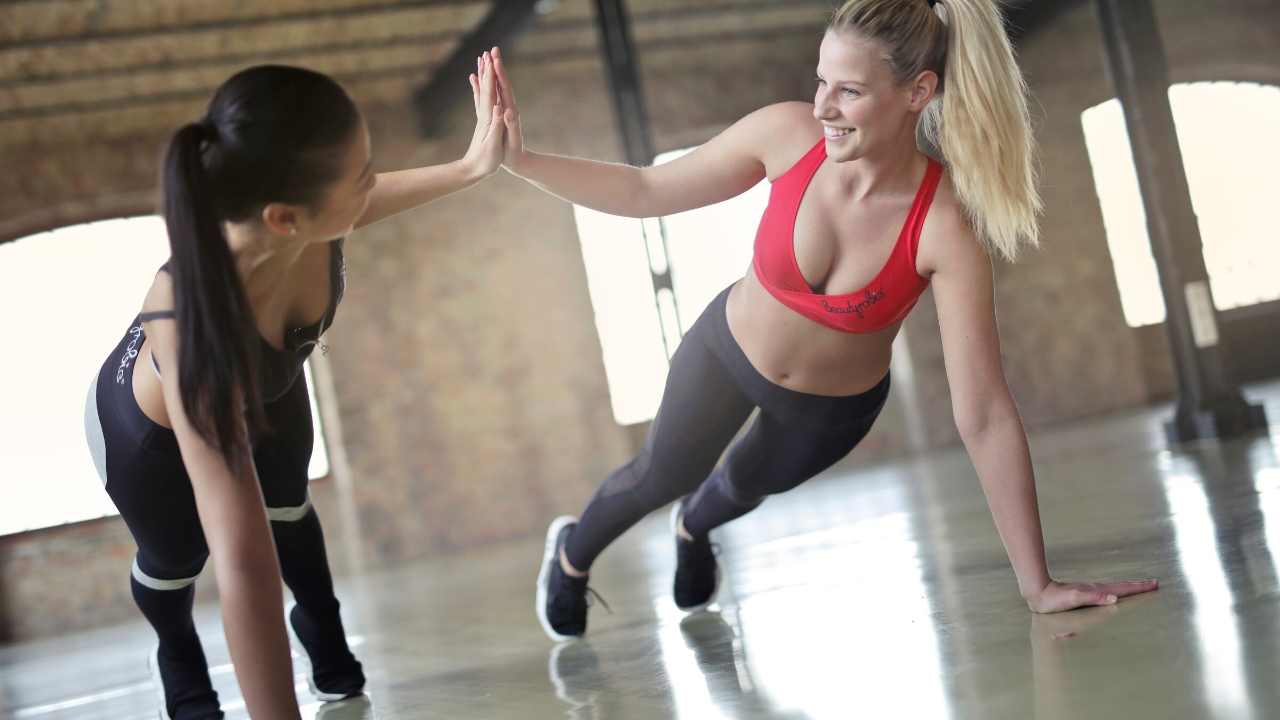
To get in shape, it's important to plan your workouts. This will help you to stay organized and send a message that it is important. It may seem impossible to get in a workout every day. But, scheduling your workouts is vital to achieving your goals. If you're not a good timer, you may want to have a friend or trainer who can help you plan your time.
Although scheduling your workouts can seem daunting, the key to success is discipline and sticking to a schedule. No matter how busy you are, it doesn't matter whether you're working out with your children or trying to fit your workouts into your school or work schedule. No matter how regular your workouts are, it is important to stick with them. Set a time limit and stick to it.

A great way to make sure you get your workouts in is to schedule them in your calendar. Not only will it make it easier to stick to your routine, but it will also be easier to get into the habit of exercising before your daily workday. It is possible to schedule similar workouts and make adjustments to them so that they fit in your busy schedule. All you have to do is drag one of the existing ones onto a workout planner. It's as simple as dragging an existing workout to your workout planner and adjusting the start and end dates.
You can also schedule your workouts around other obligations to help you stay disciplined. No matter what your job is, whether you have children or grandchildren, it is important to get exercise. It will improve your overall health, and well-being. You must remember that discipline requires you to find the time and energy to exercise. It is important to have a schedule that you stick to in order for you stay on track and motivated.
If you are tight on time, you can create a schedule for each day. For your busy schedule, a few days per work week can be a good choice. You can pick one workout to do for each day, and then schedule it around your other commitments. You can also schedule the following day's work out after the previous one. If you're a busy worker, you can remind yourself that your scheduled workouts have not been scheduled.

A daily schedule is not enough. You should also establish goals. To be successful in goal setting, you should set SMART goals. This will help you stay motivated to achieve your desired outcomes. A journal is a great way of keeping track of your progress. It is possible to record your food intake and workout routine. You can even take notes and analyze the results to learn how you can improve.
FAQ
Why do we need to have a healthy lifestyle?
Living a healthy lifestyle can help you live longer and more happy lives. A healthy diet, regular exercise and good sleep habits will prevent the development of diseases such as heart disease, stroke, cancer, diabetes, and Alzheimer's.
A healthy lifestyle will improve our mental well-being and help us deal better with everyday stressors. Healthy living will boost self-confidence and make you look and feel younger.
How can I get enough vitamins
The majority of your daily needs can be met through diet alone. Supplements are an option if you are low in any vitamin. You can purchase a multivitamin that includes all of the vitamins you need. You can also get individual vitamins from your local pharmacy.
Talk to your doctor about the best foods for vitamins if you're concerned about not getting enough nutrients. Some examples of rich sources of vitamins E and K include dark green leafy vegetables, such as spinach.
If you are not sure how much vitamin you should be consuming, ask your doctor. The doctor will determine the proper dosage based upon your medical history as well as your current health.
How do I count calories?
Perhaps you are wondering what the best diet is for you. or "is counting calories necessary?" Well, the answer depends on several factors including your current health status, your personal goals, your preferences, and your overall lifestyle.
The Best Diet for me - Which One Is Right for You?
The best diet for me depends on my current health status, my personal goals, my preferences, and my overall lifestyle. There are many diets available, some good and others not so good. Some diets work for some people, while others are not. What can I do to make the right choice? How do I make a good decision?
These are the main questions addressed by this article. This article begins with a brief overview of the various types of diets that are available today. Then we will discuss the pros & cons of each kind of diet. Then, we will discuss which diet is the best.
Let's first take a look at different diets.
Diet Types
There are three main types, low fat, high protein, or ketogenic diets. Let's discuss them briefly below.
Low Fat Diets
A low-fat diet reduces the amount of fats you eat. This is done through reducing the intake of saturated fats (butter, cream cheese, etc.) You can replace them with unsaturated oils (olive oil and avocados) If you want to lose weight fast and easily, then a low fat diet is often recommended. This diet can cause constipation, heartburn, and stomach problems. In addition, it may lead to vitamin deficiencies if a person doesn't get enough vitamins from their food.
High Protein Diets
High protein diets reduce carbohydrates to favor of proteins. These diets are more protein-rich than others. These diets are intended to increase muscle mass and reduce calories. Unfortunately, they can't provide adequate nutrition for those who eat regularly. They are not suitable for all people because they can be restrictive.
Ketogenic Diets
The keto diet is also known as the keto diet. They are high in fat and moderate in protein and carbs. These foods are popular among athletes and bodybuilders as they allow them to train harder, longer and without becoming tired. However, they must be used with caution to avoid nausea, headaches and fatigue.
How does an anti-biotic work?
Antibiotics can be used to kill bacteria. Antibiotics are used for treating bacterial infections. There are many options for antibiotics. Some can be taken orally while others are injected. Others are topically applied.
Many people who have been exposed can be prescribed antibiotics. For example, if someone has had chicken pox, he or she might take an oral antibiotic to prevent shingles later on. Or, if someone has had strep throat, he or she might receive an injection of penicillin to help prevent pneumonia.
Doctors should prescribe antibiotics to children. Children are more likely to experience side effects than adults from antibiotics.
Diarrhea is the most common side effect from antibiotics. Other possible side effects include diarrhea, nausea and vomiting, allergy reactions, dizziness, dizziness, stomach cramps, nausea, vomiting or allergic reactions. These side effects are usually gone once the treatment is complete.
What is the difference between sugar and fat?
Fat is an energy source that comes directly from food. Sugar is a sweet substance found naturally in fruits and vegetables. Both fats and sugars provide the same number of calories. Fats however, have more calories than sugars.
Fats are stored in the body and contribute to obesity. They can cause cholesterol buildup, which can lead you to heart attacks and strokes.
Sugars provide instant energy and are rapidly absorbed by the body. This causes blood glucose levels rise. High blood glucose levels can be dangerous because it increases the risk of developing type II diabetes.
Is it possible to have a weak immune system due to being cold?
There are two types of people in the world: those who love winter and those that hate it. It doesn't really matter whether you love winter or loathe it. You might be wondering why it makes you miserable.
The reason is simple: Our bodies are made to function well in warm temperatures. Our bodies were designed to thrive in hot weather because this is where the majority of our food sources are.
Today's environment is vastly different from the one our ancestors experienced. We spend more time indoors, are exposed to extreme temperatures (cold/heat), and eat processed food rather than fresh.
Our bodies aren’t accustomed to such extremes. So, when we do venture outside, we often feel exhausted, sluggish, or even sick.
There are ways to combat these effects though. You can combat these effects by making sure you are well-hydrated all day. Water is essential for your body to function properly and eliminate toxins.
Another important step is to ensure that you're eating healthy meals. Consuming healthy food helps maintain your body's optimal temperature. This is especially true for people who spend long hours indoors.
Take a few minutes every morning to meditate. Meditation can help you relax your mind, body and soul. This makes it easier to manage stress and illnesses.
What is the difference of a virus from a bacteria?
A virus can be described as a microscopic organism that cannot reproduce in another cell. A bacterium is an organism that splits itself in two. Viruses are small, around 20 nanometers in size. Bacteria are much larger, at 1 micron.
Viruses are usually spread through contact with infected bodily fluids, including saliva, urine, semen, vaginal secretions, pus, and feces. Bacteria are usually spread through direct contact with contaminated objects or surfaces.
Viruses may enter the body through cuts, scrapes. bites, or any other break in the skin. They can also penetrate the skin through the eyes, nose or mouth.
Bacteria can enter the body through wounds. They can also enter our bodies from food, water, soil, dust, and animals.
Both bacteria and viruses can cause illness. But viruses can't multiply within their hosts. They infect only living cells, causing illness.
Bacteria can cause illness by multiplying in the body. They can also invade other parts of your body. To kill them, we must use antibiotics.
Statistics
- Extra virgin olive oil may benefit heart health, as people who consume it have a lower risk for dying from heart attacks and strokes according to some evidence (57Trusted Source (healthline.com)
- In both adults and children, the intake of free sugars should be reduced to less than 10% of total energy intake. (who.int)
- WHO recommends consuming less than 5% of total energy intake for additional health benefits. (who.int)
- According to the Physical Activity Guidelines for Americans, we should strive for at least 150 minutes of moderate intensity activity each week (54Trusted Source Smoking, harmful use of drugs, and alcohol abuse can all seriously negatively affect your health. (healthline.com)
External Links
How To
27 Steps to a Healthy Lifestyle when Your Family Buys Junk Food
The best way to eat healthily is to cook at your home. But, it can be hard to make healthy meals because many people don't know how. This article will offer some suggestions on making healthier dining choices at restaurants.
-
Find restaurants that offer healthy options.
-
Order salads before you order meat dishes.
-
Ask for sauces with no added sugar.
-
Avoid fried food.
-
Request grilled meats instead of fried ones.
-
Do not order dessert unless you really need it.
-
Be sure to have something other than dinner.
-
Take your time and chew slowly.
-
When you eat, drink plenty of fluids.
-
Breakfast and lunch should not be skipped.
-
Fruits and vegetables are a great addition to every meal.
-
Choose milk over soda
-
Try to avoid sugary drinks.
-
Limit salt consumption in your diet.
-
Try to limit the time you go to fast food places.
-
Ask someone to come along if you are unable to resist temptation.
-
Make sure your kids don't spend too much time on TV.
-
Keep the television off during meals.
-
Do not drink energy drinks.
-
Take regular breaks from the office.
-
Get up at a reasonable hour and do some exercise.
-
Exercise everyday.
-
Start small, and work your way up.
-
Set realistic goals.
-
Be patient.
-
Find time to exercise even if you don't feel like it.
-
Positive thinking is key.